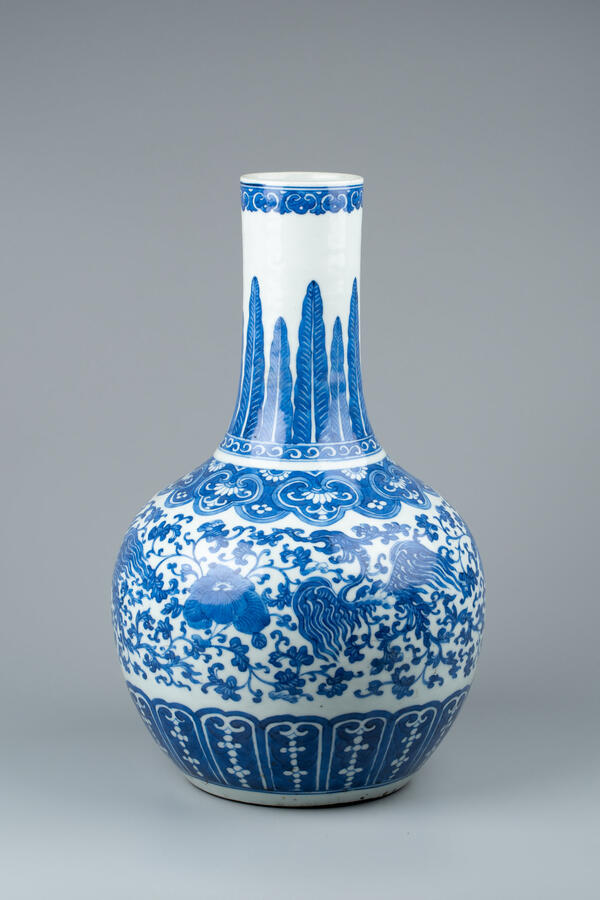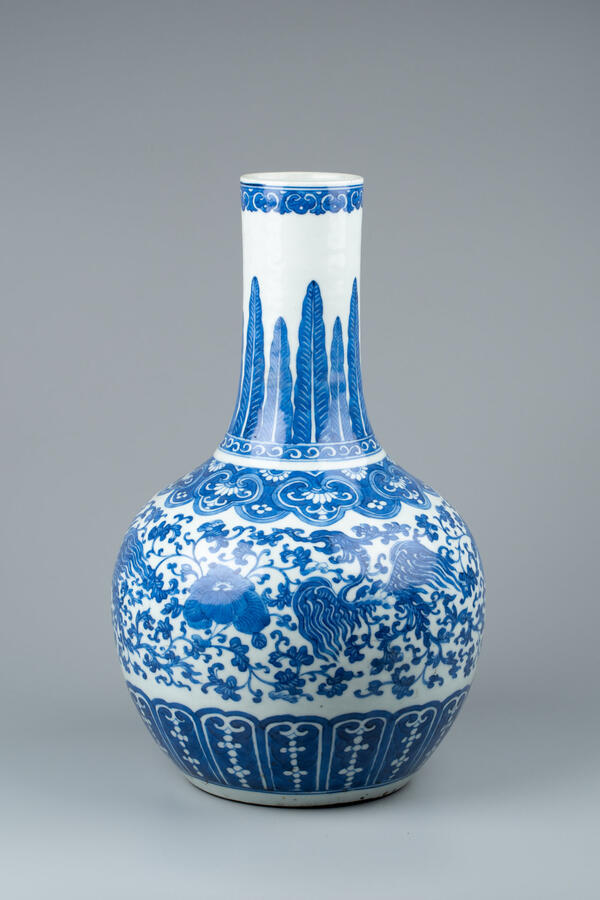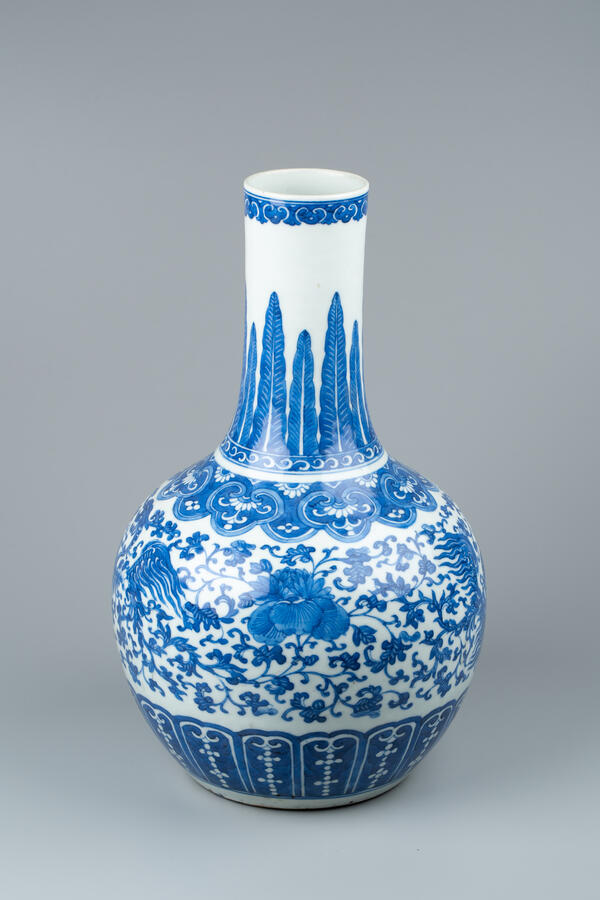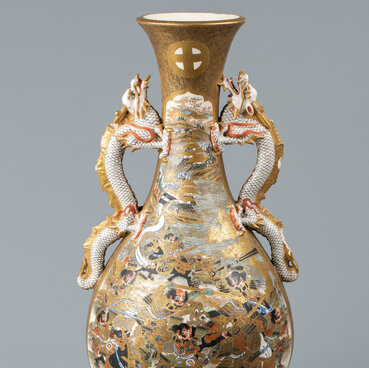The era, which includes the Kangxi period (1662 — 1722), is one of the most complex and fascinating in the history of Chinese porcelain. As researchers note, the porcelain of the late 14th — the first third of the 18th century is not just a highly artistic form of decorative and applied arts, it is often the main source for scholars to learn about Chinese symbolism and the formation of the iconography of deities.
The displayed spherical vase with a high narrow neck belongs to this period. It was previously housed in the collection of the founder of a brewery and entrepreneur Alfred von Vacano. The vase is decorated with a cobalt-blue underglaze design in the form of horizontal ornamental bands of lotus leaves, “lingzhi” mushrooms, “mudan” peony flowers and “fenghuang phoenixes” — symbols of longevity, happiness and wealth. The widest part of the ornamental design is decorated with images of phoenixes, which alternate with peonies. Initially, the word “fenghuang” meant the messenger of the Heavenly lord — the god of the wind (wind — “feng”).
The surface of the narrow neck is covered with a vertical pattern of banana leaves. The vase is distinguished by the bright, deep cobalt blue tone, the richness of the shades and a highly skillful fine drawing. The porcelain with cobalt-blue underglaze (blue on a white background) is called “Tsinghua”.
The shape and design of the items from porcelain workshops of the 17th and 18th centuries are intrinsically linked with a series of complex and contradictory historical and cultural changes that were taking place in the country. By the beginning of the 17th century, Chinese porcelain had already developed from an elite court art to a type of artistic craft beloved by the widest strata of the population.
The porcelain of the late 17th — the first half of the 18th century still remained the primary form of decorative and applied arts. Despite the fact that the artistic practices of that time were quite conservative in terms of techniques and methods, the porcelain items were characterized by the greatest degree of freedom and creativity. They managed to avoid the traditionalism that dominated all kinds of artistic domains, such as painting and architecture.
The displayed spherical vase with a high narrow neck belongs to this period. It was previously housed in the collection of the founder of a brewery and entrepreneur Alfred von Vacano. The vase is decorated with a cobalt-blue underglaze design in the form of horizontal ornamental bands of lotus leaves, “lingzhi” mushrooms, “mudan” peony flowers and “fenghuang phoenixes” — symbols of longevity, happiness and wealth. The widest part of the ornamental design is decorated with images of phoenixes, which alternate with peonies. Initially, the word “fenghuang” meant the messenger of the Heavenly lord — the god of the wind (wind — “feng”).
The surface of the narrow neck is covered with a vertical pattern of banana leaves. The vase is distinguished by the bright, deep cobalt blue tone, the richness of the shades and a highly skillful fine drawing. The porcelain with cobalt-blue underglaze (blue on a white background) is called “Tsinghua”.
The shape and design of the items from porcelain workshops of the 17th and 18th centuries are intrinsically linked with a series of complex and contradictory historical and cultural changes that were taking place in the country. By the beginning of the 17th century, Chinese porcelain had already developed from an elite court art to a type of artistic craft beloved by the widest strata of the population.
The porcelain of the late 17th — the first half of the 18th century still remained the primary form of decorative and applied arts. Despite the fact that the artistic practices of that time were quite conservative in terms of techniques and methods, the porcelain items were characterized by the greatest degree of freedom and creativity. They managed to avoid the traditionalism that dominated all kinds of artistic domains, such as painting and architecture.





